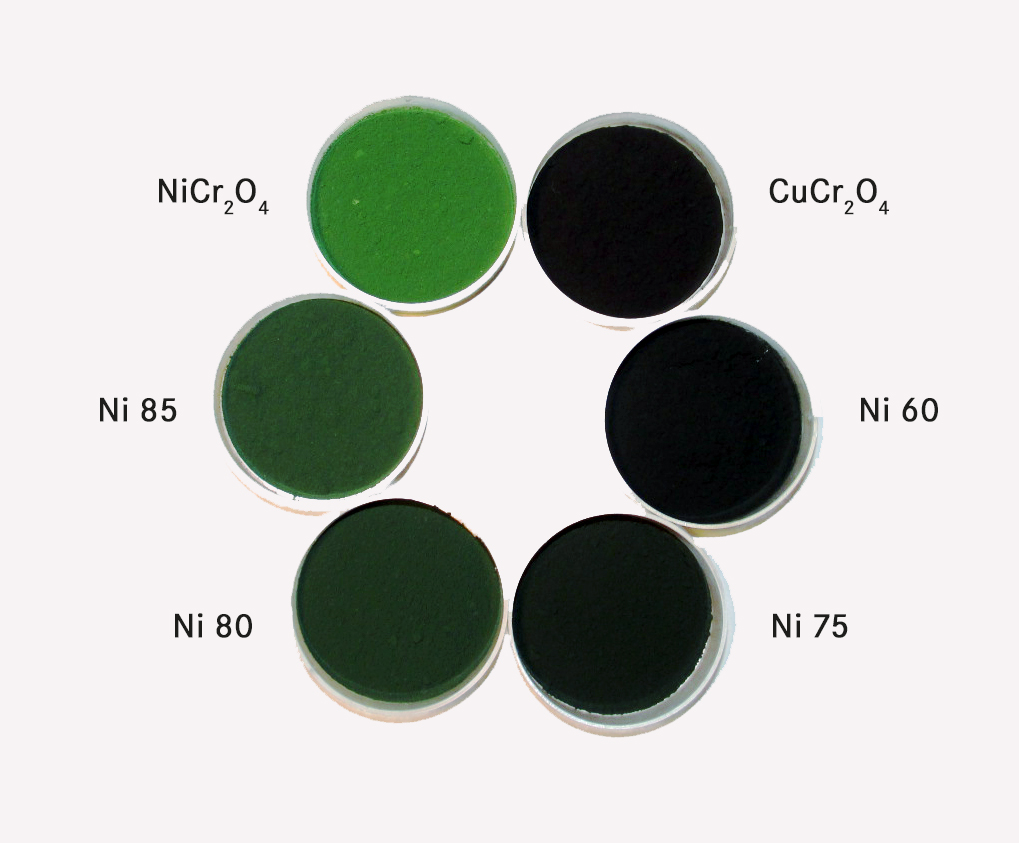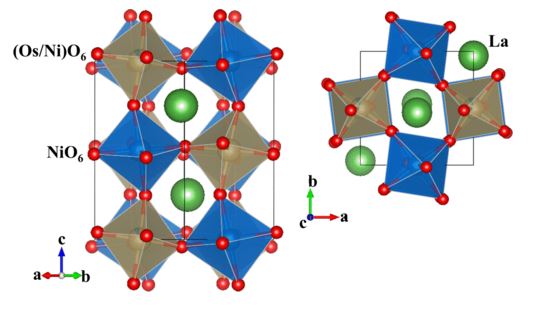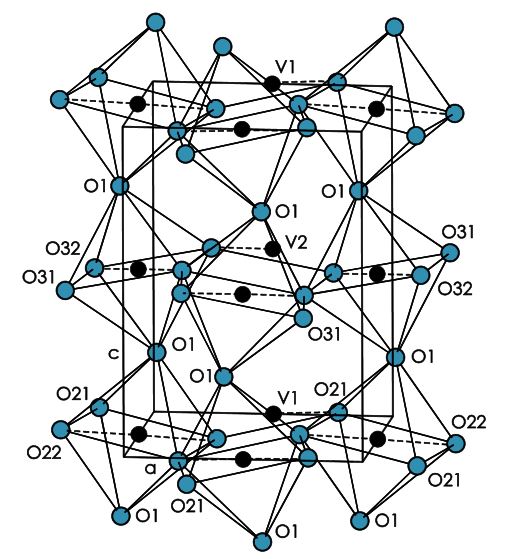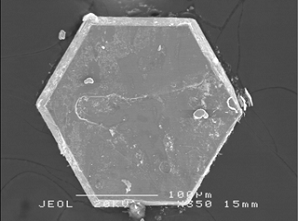Institute Quantum Phenomena in Novel Materials
Novel Oxides
Transition metal oxides are of great potential for technological applications since they show a wide range of extraordinary properties like multiferroic behavior, colossal magnetoresistance, and high-Tc superconductivity. The physics of these systems is governed by an intricate interplay of competing interactions among the charge, spin, and orbital degrees of freedom which may result in coexistence or competition of various types of ordered ground states. In order to map the hierarchy of these interactions the combined use of a broad range of experimental techniques is required, as exemplified by the quest for skyrmions. HZB houses a wide choice of x-ray based techniques that are ideally suited for the study of structural, electronic, and magnetic properties of materials. On the firm ground of state-of-the-art sample preparation and characterization we carry out neutron scattering, advanced photon spectroscopy, and resonant x-ray scattering experiments in extreme sample environments which provide combinations of very low temperatures, extremely high magnetic fields, high pressures and other external stimuli. Understanding the response of the investigated materials to variation of any external parameter is the great challenge in the study of multifunctional oxides.
In the following we present a few examples of research carried out within the last few years.
For a full list of publications of our research group click here.
Spin reorientation by Ni doping in Cu1−xNixCr2O4 and evidence for canted magnetic Cr order
In ferrimagnetic spinels AB2O4 the magnetic structure is strongly influenced by lattice distortions, geometric frustration and the electronic properties of the cations at the A and B sites. We studied the temperature dependence of the magnetic structure of CuCr2O4 and Cu0.9Ni0.1Cr2O4 using neutron diffraction. CuCr2O4 undergoes a first continuous magnetic transition around 155 K into a canted long-range spin order on the Cr sublattice established by an antiferromagnetic and a ferromagnetic mode. Below 130 K, a second transition occurs into a ferromagnetic order on the Cu sublattice resulting in a ferrimagnetic spin arrangement. The occurrence of a ferromagnetic Cr mode above 130 K questions the common interpretation that a strong antiferromagnetic coupling between A and B spins in ferrimagnetic AB2O4 spinels is responsible for spin canting. From our neutron diffraction measurements of Cu1−xNixCr2O4 we identify a spin reorientation for the ferromagnetic modes with a nickel content between x = 0 and 0.1.
N Stüsser, M Reehuis, M Tovar, B Klemke, A Hoser, JU Hoffmann, J Magn Magn Mat 506 (2020) 166683
M Reehuis, M Tovar, DM Többens, P Pattison, A Hoser, and B Lake, Physical Review B 91 (2015) 024407
Canted ferrimagnetism and giant coercivity in the nonstoichiometric double perovskite La2Ni1.19Os0.81O6
La2Ni1.19Os0.81O6 crystallizes in the monoclinic double perovskite structure, where the B site is fully occupied by Ni and the B′ site by 19% Ni and 81% Os atoms. Using x-ray absorption spectroscopy an Os4.5+ oxidation state was established, suggesting the presence of about 50% paramagnetic Os5+ (5d3, S=3/2) and 50% nonmagnetic Os4+ (5d4, Jeff=0) ions at the B′ sites. Magnetization and neutron diffraction measurements provide evidence for a ferrimagnetic transition at 125 K with a canted ferrimagnetic spin structure with collinear Ni2+-spin chains extending along the c axis but a noncollinear spin alignment within the ab plane. The magnetization curve of La2Ni1.19Os0.81O6 features a hysteresis with a very high coercive field, HC=41kOe, at T=5K, which is explained in terms of large magnetocrystalline anisotropy due to the presence of Os ions together with atomic disorder.
HL Feng, M Reehuis, P Adler, Z Hu, M Nicklas, A Hoser, S-C Weng, C Felser, M Jansen, M.: Physical Review B 97 (2018) 184407, Open Access Version 
Spin and orbital disordering by hole doping in Pr1−xCaxVO3
Pr1−xCaxVO3 is a good model system for the influence of hole doping on the spin and orbital correlations in transition metal oxides. The end member PrVO3 is a Mott-Hubbard insulator, which exhibits a structural phase transition at TS=180K from an orthorhombic to a monoclinic structure. This transition is associated with the onset of orbital ordering and strong Jahn-Teller distortions of the VO6 octahedra. Antiferromagnetic order is observed below TN=140K. In the insulating range of the Pr1−xCaxVO3 phase diagram, Ca doping reduces both the orbital and magnetic transition temperatures, e.g., TS=108K and TN=95K for x=0.20. The Jahn-Teller distortions and ordered vanadium moments also decrease upon doping. In a metallic sample with x=0.30, Jahn-Teller distortions and long-range orbital ordering are no longer observable.
M Reehuis, C Ulrich, PM Abdala, P Pattison, G Khaliullin, J Fujioka, S Miyasaka, Y Tokura, B Keimer, Physical Review B 94 (2016) 104436, Open Access Version 
Observation of a Devil’s Staircase in the Novel Spin-Valve System SrCo6O11
Using resonant soft-x-ray scattering as a function of both temperature and magnetic field, we reveal a large number of almost degenerate magnetic orders in SrCo6O11. The Ising-like spins in this frustrated material in fact exhibit a so-called magnetic devil’s staircase. It is demonstrated how a magnetic field induces transitions between different microscopic spin configurations, which is responsible for the magnetoresistance of SrCo6O11. This material therefore constitutes a unique combination of a magnetic devil’s staircase and spin-valve effects, yielding a novel type of magnetoresistance system.
T Matsuda, S Partzsch, T Tsuyama, E Schierle, E Weschke, J Geck, T Saito, S Ishiwata, Y Tokura, and H Wadati, Phys. Rev. Lett. 114 (2015) 236403
See also the associated highlight report




